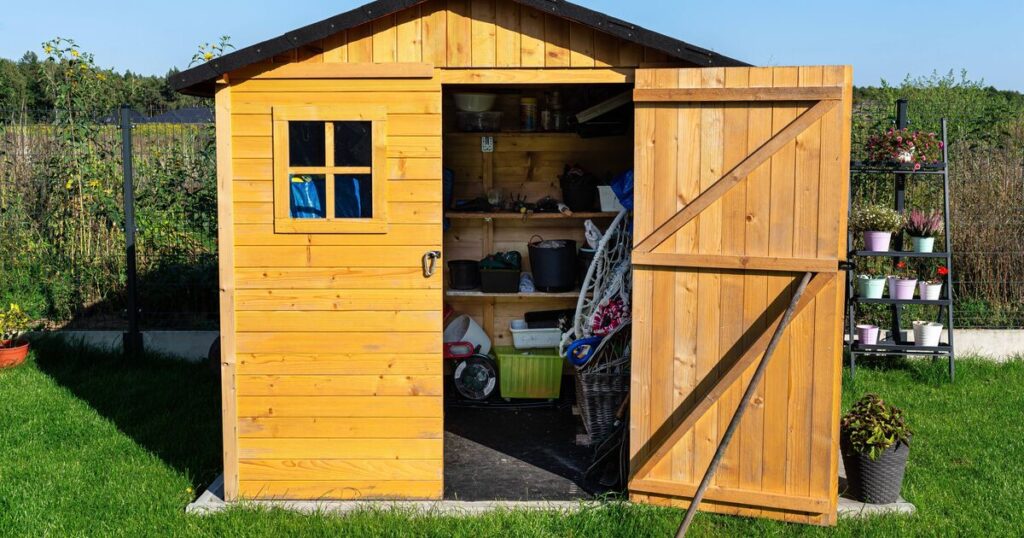
As the gardening season draws to a close throughout autumn and winter, now presents the ideal opportunity to ensure your garden tools are stored properly and your shed is well organised. Following months of usage, it’s simple for matters to become chaotic, with implements scattered about, shelves overcrowded and equipment abandoned wherever it was last used.
Nevertheless, garden shed specialist Sam Jenkinson from garden building retailer Tiger cautions that abandoning your shed in disarray over winter can result in damage, corrosion, and expensive replacements when spring arrives. To prevent this, he reveals four straightforward storage practices that can make all the difference.
Prepare your tools
Sam explained: “Before you put anything away for winter, give your tools a good clean and check-over. Any soil or moisture left on metal parts can cause corrosion, so wipe them down thoroughly and make sure they’re completely dry. It’s also a good idea to disinfect blades with a mild solution to kill off bacteria or fungal spores that might have accumulated over the summer.
“Once clean, apply a light coat of oil to all metal parts to protect against rust and apply a little linseed oil on any wooden handles, which will help prevent them from cracking in cold weather. Skipping this step can even be costly, as even a couple rusty spades or shears could add up come spring.”
Keep floor space empty
Sam said: “One of the most common mistakes we make is leaving tools on the shed floor. As moisture and damp rise from the ground up, if you leave your tools on the ground, this can quickly lead to metal tools becoming rusty and wooden tools rotting.
“Hanging your tools on wall racks, hooks, or pegboards keeps them elevated and dry, reducing the chances of them becoming damaged by damp. It also keeps your shed tidy and makes it easier to find what you need when gardening season starts again.”
Use clever storage solutions
Sam said: “Organisation is key to keeping tools in good condition over the winter months. Use sturdy shelves, crates, or plastic containers for smaller tools and accessories to keep them dry and dust-free.
“Bungee cords, which can start from as little as £5, are also a budget-friendly solution. By stretching cords across walls or beams, you can create simple storage pockets for tools, hoses, or other awkwardly shaped items. Running a couple of cords horizontally along a wall helps keep tall tools like rakes or spades neatly upright.
“This flexible setup not only maximises shed space but can also save money by preventing rust or damage, helping you avoid costly repairs or replacements. For larger machinery, like lawnmowers or strimmers, make sure you clean them properly before putting them away, and always drain out any leftover fuel. If you’re covering your equipment, avoid plastic sheets, as they can trap condensation. Instead, use a breathable fabric that allows moisture to escape while still offering protection.”
Remove items so they don’t get damaged
Sam said: “There are certain items that shouldn’t be left in your garden shed during the colder months, particularly anything that is sensitive to freezing temperatures. Batteries for power tools, such as cordless drills and hedge trimmers, can lose their charge or degrade if left in the cold, reducing their lifespan or making them unusable by spring.
“Likewise, paints, glues, and finishing liquids can freeze, separate, or lose their effectiveness when exposed to low temperatures, leaving homeowners with costly replacements. In some cases, containers may even crack or leak, creating a mess or damaging nearby tools and materials.
“Smaller items such as drill bits, saw blades, and lubricants can also rust or thicken in damp conditions. The best way to protect these items is to move them indoors, to a dry location and frost-free until the weather warms.”






















